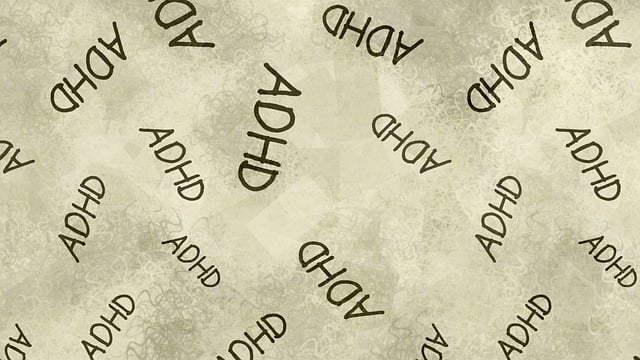Risk assessment is a cornerstone of Highlands Ranch EMDR Therapy, aiding professionals in predicting and mitigating risks associated with clients' mental states and behaviors. Through comprehensive evaluations, therapists develop personalized treatment plans, implement safety strategies, and offer support through outreach programs and coaching. Regular updates are vital as mental wellness is dynamic. Challenges faced by Highlands Ranch EMDR therapists include processing trauma and managing intense emotions, necessitating self-care, reflection, and boundary setting to prevent burnout. Adapting treatments for diverse needs and cultural backgrounds, while creating safe spaces, is crucial. Continuous learning on techniques for self-esteem improvement enhances success. Effective risk management, through multi-faceted approaches including staff training and clear protocols, prioritizes client safety and fosters a supportive environment for mental wellness in Highlands Ranch EMDR Therapy settings.
In the context of mental health practice, risk assessment is a vital tool for ensuring patient safety and well-being. This article explores the critical component of risk assessment within Highlands Ranch EMDR (Eye Movement Desensitization and Reprocessing) therapy settings. We delve into specific risks and challenges unique to this field, offering strategies for effective risk management. Understanding these dynamics is essential for therapists navigating the complexities of EMDR in a thriving yet demanding environment like Highlands Ranch.
- Understanding Risk Assessment in Mental Health Practice
- Specific Risks and Challenges Faced by EMDR Therapists in Highlands Ranch
- Strategies for Effective Risk Management in EMDR Therapy Settings
Understanding Risk Assessment in Mental Health Practice

Risk assessment is a cornerstone of mental health practice, enabling professionals to predict and mitigate potential risks associated with clients’ mental states and behaviors. For instance, in Highlands Ranch EMDR Therapy, understanding risk factors such as previous trauma, suicidal ideation, or psychotic symptoms is crucial for tailoring effective treatment plans. By systematically evaluating these risks, therapists can create safety plans, implement Community Outreach Program interventions, and develop Mental Wellness Coaching Programs to support clients’ recovery.
Mental health professionals must stay vigilant in their assessment, especially when addressing complex cases. Regularly reviewing and updating risk assessments is essential, as mental wellness is a dynamic process. Through ongoing monitoring, professionals can ensure they are prepared to handle escalating risks and provide timely interventions. Promoting Mental Health Awareness within the community further strengthens these efforts, fostering an environment where individuals feel supported in seeking help and receiving appropriate care.
Specific Risks and Challenges Faced by EMDR Therapists in Highlands Ranch

Highlands Ranch EMDR therapists often face unique challenges due to the highly specialized nature of their work. Eye Movement Desensitization and Reprocessing (EMDR) therapy involves helping clients process traumatic memories, which can be emotionally intense and potentially triggering for both therapist and client. The demanding emotional workload can lead to burnout if not managed effectively. Therapists must prioritize self-care practices, including setting clear boundaries, engaging in regular self-reflection, and cultivating a supportive professional network to maintain their mental wellness.
Moreover, navigating the complex landscape of individual client needs within the context of Highlands Ranch’s diverse community presents another set of challenges. Every client brings their own unique experiences, beliefs, and cultural backgrounds, requiring therapists to adapt their approach flexibly. Fostering a safe, non-judgmental space while addressing sensitive topics like past trauma is crucial for successful therapy. This involves continuous learning about self-esteem improvement techniques tailored to meet the diverse needs of clients in this community.
Strategies for Effective Risk Management in EMDR Therapy Settings

In Highlands Ranch EMDR Therapy settings, effective risk management is paramount to ensure client safety and foster a therapeutic environment conducive to mental wellness. Strategies for mitigating risks involve a multi-faceted approach. Firstly, thorough intake assessments are crucial to identify potential vulnerabilities and triggers. Mental health professionals should be equipped with advanced training in crisis intervention techniques, enabling them to handle sensitive situations adeptly. Regular staff training sessions on risk assessment, management, and de-escalation strategies enhance the team’s preparedness.
Additionally, establishing clear protocols for client monitoring and progress tracking is vital. This includes regular check-ins and consistent record-keeping to identify emerging risks or relapses early on. Integrating these practices into the Mental Wellness Podcast Series Production can further promote mental health awareness, empowering both professionals and clients to navigate challenges with inner strength development.
Mental health professionals, particularly those practicing EMDR therapy in Highlands Ranch, face unique risks and challenges. By understanding these risks and implementing effective risk management strategies, therapists can enhance patient safety and foster a secure therapeutic environment. This includes recognizing specific stressors, adopting robust communication practices, and continuously updating skills to navigate complex cases. Embracing these measures ensures that Highlands Ranch EMDR therapy remains both beneficial and secure for all involved.














